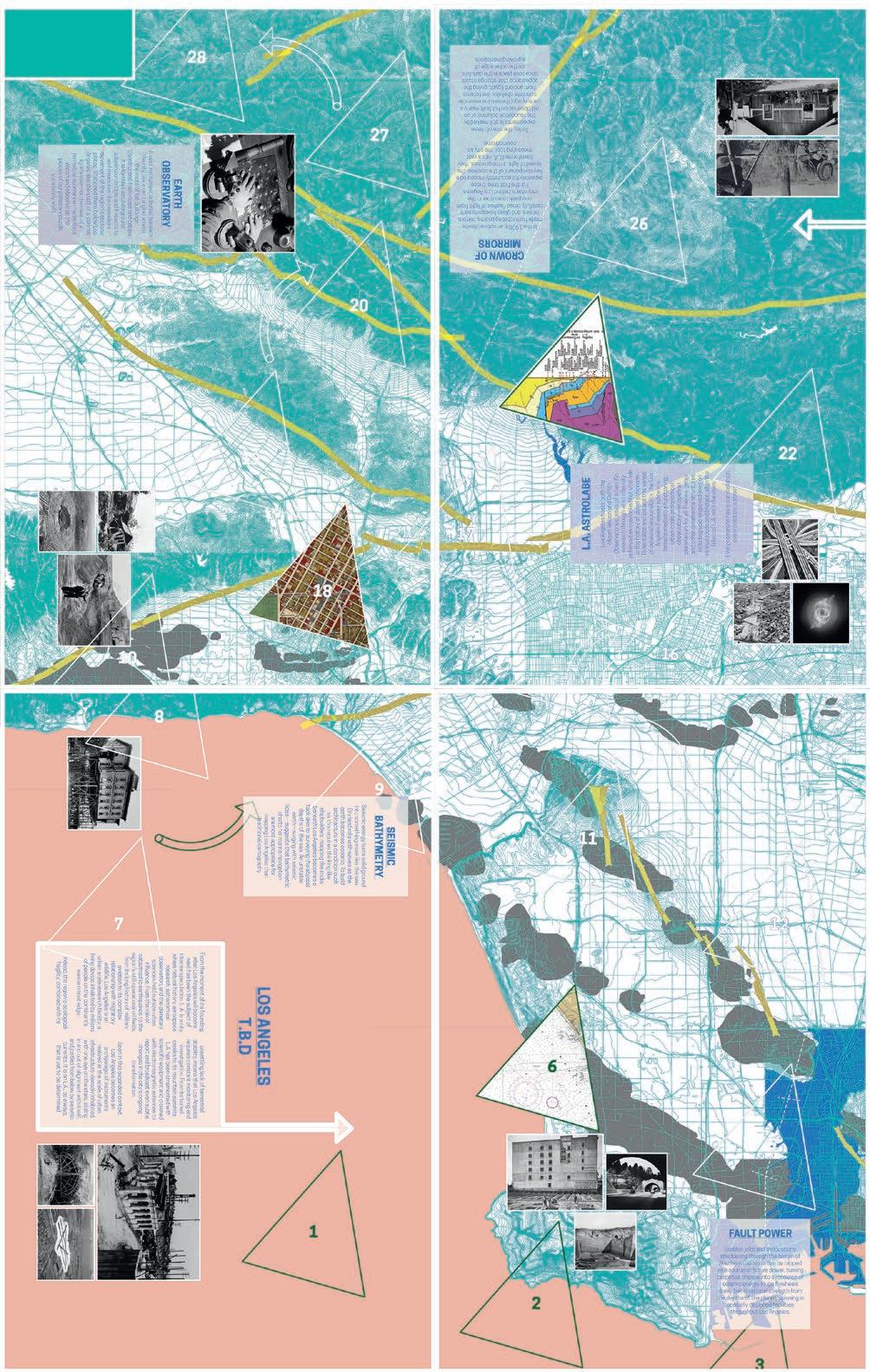
2 minute read
Context
LA Futures researches LA’s geological potential and its relationship with the urban landscape. It draws from work by the Centre for Land Use Interpretation (CLUI), a nonprofit organisation based in LA. CLUI have recorded how the landscape of LA is interwoven with the infrastructure of petrochemical extraction, exploiting the reserves of some of the most productive wells in history. Flows of methane and helium and sticky pavement stains contribute to the ad hoc petroleum landscape of spills, vents, gas detectors and methane alarms, which reveal the volatility of the earth below. Matthew Coolidge, CLUI’s Director, leads tours of this dispersed network and writes ‘the petroleum industry operates in the cracks, corners and edges, hidden behind fences, and camouflaged into architecture, literally pulling oil out from under the feet of the city’s inhabitants’ (Coolidge 2006) (36–7).
In exploring LA as a site of astronomical observation and scientific experimentation, this project responds to the work of physicist Albert A. Michelson who conducted a series of experiments in the 1920s to accurately measure the velocity of light in the mountains beyond the city. Sending pulses of light from Mount Wilson to Mount San Antonio, 22 miles east, Michelson measured the speed of the returning light reflected off an intricate apparatus of multifaceted revolving mirrors (38). Crown of Mirrors attempts to materialise the instruments of scientific study at a building and urban scale.
LA Futures revisits two projects by architect Lebbeus Woods. Both projects present architecture as responsive to dynamic geomechanical forces and were instrumental in the design proposals, where architecture is similarly presented as dynamic and reactive to Earth’s elemental forces. Firstly, Underground Berlin (1988) imagines a subterranean ‘living laboratory’ in which architecture is devised as an instrumental device:
Tools for extending perceptivity to all scales of nature are built spontaneously, playfully, experimentally, continuously modified in home laboratories, in laboratories that are homes […] each object – chair, table, cloth, examining apparatus, structure – is an instrument; each material thing connects the inhabitants with events in the world around him and within himself (Woods 1992).
Inhabiting the Quake (1995), meanwhile, envisions a series of organic and responsive projects for San Francisco: Quake City, Slip House and Fault Houses explore the possibilities for an architecture that:
In its conception, construction and inhabitation comes in to new and potentially creative relationships not only with the effects of earthquakes, but more critically with the wide nature of which they are a part (Woods 1997).
36 38


37
36 Map of the Las Cienagas Jefferson drill site, showing a web of at least 30 diagonal wells radiating out and under the local residential area, 2017.
37 Schematic by Albert A. Michelson of the Mount Wilson apparatus set-up, c.1920.
38 The Packard Well site disguised as an office building, however, aerial photos reveal oil derricks operating 51 wells that extend from a void behind its façade.

39 #LATBD map showing use of a gameboard graphic, featuring images from the USC Archive.


41
40 USGS Geological section no. 11, LA Basin to San Gabriel Mountains.
41 Earthquake Faults of California, 1980.


